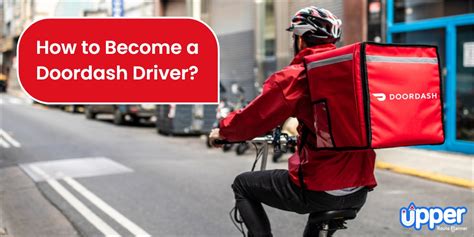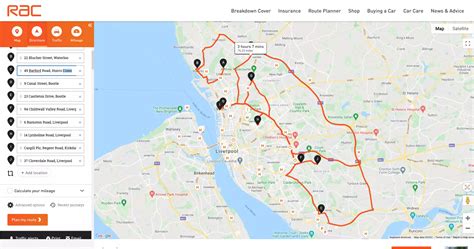How Much Do Amazon Dsp Make
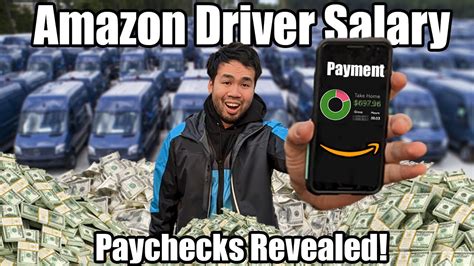
Amazon Delivery Service Partners (DSPs) are an integral part of Amazon's extensive logistics network, providing the last-mile delivery service for packages to customers. The DSP program allows entrepreneurs and businesses to partner with Amazon, offering them the opportunity to start and manage their own delivery businesses. As such, the earnings and profitability of Amazon DSPs are of great interest to those considering joining the program or those already involved in the logistics industry.
In this comprehensive guide, we will delve into the financial aspects of Amazon DSPs, exploring the potential earnings, the factors influencing profits, and the steps one can take to maximize their income as an Amazon DSP. We will also analyze real-world examples and industry data to provide an accurate and insightful look at the financial landscape of this unique business opportunity.
Understanding Amazon DSP Earnings
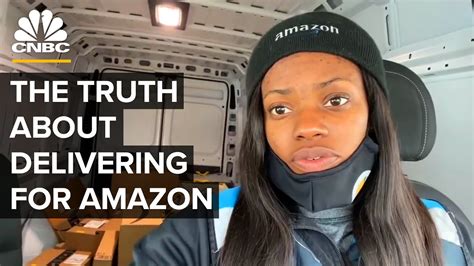
Amazon DSPs are independent business owners who contract with Amazon to provide delivery services. As such, their earnings are dependent on various factors, including the size and performance of their fleet, the number of routes operated, and the efficiency of their operations. Amazon provides a base rate per package delivered, which serves as the foundation for DSPs’ earnings. However, there are several other components that contribute to the overall profitability of an Amazon DSP business.
Base Package Rate
The base package rate is a crucial aspect of Amazon DSP earnings. This rate is determined by Amazon and can vary based on factors such as the region, package size, and delivery requirements. On average, DSPs earn between 1.20 and 2.20 per package delivered. This rate is designed to cover the costs of operating a delivery business, including vehicle expenses, fuel, maintenance, and driver salaries.
For instance, let's consider a DSP operating in a suburban area with an average package rate of $1.50. If they deliver 500 packages per day, their daily revenue from package deliveries would be $750. Over a month, this would equate to approximately $22,500, providing a solid foundation for their business earnings.
Performance Incentives
Amazon DSPs have the opportunity to earn additional revenue through performance incentives. These incentives are designed to reward DSPs for achieving certain milestones or maintaining high standards of service. Performance incentives can include bonuses for on-time deliveries, customer satisfaction, and efficient route planning.
For example, a DSP that consistently achieves a high on-time delivery rate might receive a bonus of $0.10 per package delivered. If they deliver 500 packages per day, this incentive could add an additional $50 to their daily earnings, further boosting their profitability.
Fleet Size and Efficiency
The size and efficiency of a DSP’s fleet play a significant role in their earnings potential. A larger fleet can handle more packages, leading to increased revenue. However, managing a larger fleet also comes with higher operational costs, including vehicle acquisition, maintenance, and staffing.
To illustrate, let's consider a DSP with a fleet of 10 vehicles, each capable of delivering 50 packages per day. At an average package rate of $1.50, their daily revenue from this fleet would be $750. If they can optimize their operations and increase efficiency, they might be able to deliver 60 packages per vehicle, boosting their daily revenue to $900.
Route Optimization and Planning
Efficient route planning is a critical aspect of Amazon DSP profitability. Optimizing routes can reduce mileage, fuel consumption, and delivery times, leading to cost savings and increased earnings. DSPs use various tools and technologies to plan routes, considering factors such as traffic, package size, and delivery urgency.
By implementing effective route optimization strategies, DSPs can significantly improve their bottom line. For instance, reducing mileage by 10% through optimized routes can lead to fuel savings and a more efficient use of resources, ultimately boosting overall profitability.
Maximizing Earnings as an Amazon DSP

Maximizing earnings as an Amazon DSP requires a strategic approach to business operations. Here are some key strategies and considerations for DSPs looking to boost their profitability:
Fleet Management and Optimization
Effective fleet management is crucial for DSPs. This includes optimizing vehicle utilization, maintaining a well-maintained fleet, and ensuring efficient driver allocation. DSPs should regularly review their fleet performance and consider strategies such as vehicle rotation, route reallocation, and driver training to improve overall efficiency.
For instance, a DSP might analyze their fleet's performance and decide to replace older vehicles with more fuel-efficient models. This could lead to reduced fuel costs and increased mileage, ultimately contributing to higher earnings.
Performance Excellence
Achieving and maintaining high standards of performance is essential for DSPs to maximize their earnings. This includes consistently delivering packages on time, maintaining high customer satisfaction, and adhering to Amazon’s delivery guidelines. DSPs should focus on continuous improvement and implement strategies to enhance their operational excellence.
One way to achieve performance excellence is by investing in technology. For example, implementing a real-time tracking system can improve package visibility, enhance customer service, and provide valuable data for route optimization, ultimately contributing to higher earnings.
Business Growth and Expansion
Expanding a DSP business can lead to increased earnings and profitability. This might involve adding more vehicles to the fleet, acquiring new routes, or diversifying services. However, growth should be carefully planned and aligned with the DSP’s capacity and resources to ensure sustainable success.
A DSP might consider expanding their services to include same-day delivery or offering specialized delivery solutions for high-value or time-sensitive packages. Such diversification can open up new revenue streams and enhance their competitiveness in the market.
Financial Management and Cost Control
Effective financial management is crucial for DSPs to ensure their business’s long-term viability and profitability. This includes careful budgeting, tracking expenses, and managing cash flow. DSPs should regularly review their financial performance and implement strategies to optimize costs and improve overall financial health.
For instance, negotiating better rates with fuel suppliers or implementing a fuel card program can lead to significant cost savings over time. Similarly, optimizing staffing levels and training drivers to reduce vehicle accidents can lower insurance costs and improve overall financial performance.
Real-World Earnings and Case Studies
Understanding the real-world earnings of Amazon DSPs can provide valuable insights into the potential profitability of this business opportunity. While earnings can vary widely based on various factors, we can examine a few case studies to gain a clearer picture.
Case Study 1: Suburban DSP
John, an Amazon DSP owner, operates in a suburban area with a population of approximately 500,000. He started his business with a fleet of 5 vehicles, each capable of delivering 50 packages per day. Over time, he has expanded his fleet to 10 vehicles and optimized his routes to deliver an average of 60 packages per vehicle per day.
| Base Package Rate | $1.50 |
|---|---|
| Daily Package Deliveries | 600 |
| Monthly Revenue | $27,000 |
| Performance Incentives | $0.10 per package |
| Monthly Incentive Earnings | $6,000 |
| Total Monthly Earnings | $33,000 |
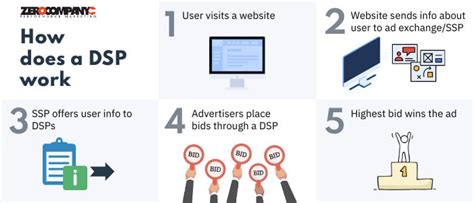
Through efficient fleet management, route optimization, and consistent performance, John's DSP business generates substantial earnings. His total monthly earnings of $33,000 demonstrate the potential profitability of an Amazon DSP business when operated effectively.
Case Study 2: Urban DSP
Sarah, another Amazon DSP owner, operates in an urban area with a population of over 2 million. She started her business with a fleet of 8 vehicles, focusing on delivering packages to densely populated areas. Over time, she has optimized her routes and expanded her fleet to 12 vehicles, delivering an average of 70 packages per vehicle per day.
| Base Package Rate | $1.80 |
|---|---|
| Daily Package Deliveries | 840 |
| Monthly Revenue | $45,360 |
| Performance Incentives | $0.05 per package |
| Monthly Incentive Earnings | $4,200 |
| Total Monthly Earnings | $49,560 |
Sarah's DSP business, despite operating in a more challenging urban environment, has achieved impressive earnings. Her strategic approach to fleet management and route optimization, combined with consistent performance, has led to substantial monthly earnings of $49,560.
Case Study 3: Rural DSP
Mike, an Amazon DSP owner in a rural area, faces unique challenges due to the sparse population and longer distances between delivery locations. He started his business with a fleet of 4 vehicles, each capable of delivering 40 packages per day. Through careful route planning and efficient fleet management, he has optimized his operations and expanded his fleet to 6 vehicles, delivering an average of 50 packages per vehicle per day.
| Base Package Rate | $1.30 |
|---|---|
| Daily Package Deliveries | 300 |
| Monthly Revenue | $15,600 |
| Performance Incentives | $0.08 per package |
| Monthly Incentive Earnings | $2,400 |
| Total Monthly Earnings | $18,000 |
Despite the challenges of operating in a rural area, Mike's DSP business demonstrates the potential for profitability. Through efficient operations and careful management, he has achieved monthly earnings of $18,000, showcasing the success that can be achieved even in less populated regions.
The Future of Amazon DSP Earnings
As the e-commerce industry continues to grow and evolve, the role of Amazon DSPs is likely to become even more crucial. The increasing demand for faster and more efficient delivery services presents significant opportunities for DSPs to expand their businesses and boost their earnings.
Amazon itself is committed to continuous improvement and innovation in its logistics network. The company is investing in technologies such as automated package sorting, electric delivery vehicles, and drone delivery services, all of which can enhance the efficiency and profitability of DSP operations. DSPs who embrace these advancements and adapt their businesses accordingly are likely to experience even greater success in the future.
Furthermore, as Amazon expands its global presence and enters new markets, the DSP program will play a vital role in delivering packages to customers in these regions. This presents a unique opportunity for DSPs to expand their businesses internationally and tap into new markets, further increasing their earnings potential.
Conclusion

Amazon Delivery Service Partners have the potential to earn substantial income by providing last-mile delivery services for Amazon packages. The earnings of DSPs are influenced by various factors, including package rates, performance incentives, fleet size, and operational efficiency. By optimizing their businesses, focusing on performance excellence, and adapting to industry advancements, DSPs can maximize their earnings and achieve long-term success.
As the e-commerce landscape continues to evolve, the role of Amazon DSPs will become increasingly significant. With the right strategies, a commitment to excellence, and a willingness to embrace innovation, Amazon DSPs can look forward to a bright and profitable future.
How does Amazon calculate the base package rate for DSPs?
+Amazon determines the base package rate based on various factors, including region, package size, and delivery requirements. This rate is designed to cover the costs of operating a delivery business, including vehicle expenses, fuel, maintenance, and driver salaries.
Can DSPs negotiate their package rates with Amazon?
+Package rates are typically set by Amazon and are not negotiable. However, DSPs can focus on optimizing their operations, achieving high performance standards, and exploring opportunities for business growth to maximize their earnings within the given package rate structure.
What are some strategies to improve the efficiency of a DSP fleet?
+To improve fleet efficiency, DSPs can consider strategies such as vehicle rotation, optimizing driver allocation, and implementing real-time tracking systems for better route planning. Regular maintenance and fuel-efficient practices can also contribute to cost savings and improved fleet performance.
How do performance incentives impact DSP earnings?
+Performance incentives are a significant motivator for DSPs to maintain high standards of service. Bonuses for on-time deliveries, customer satisfaction, and efficient route planning can add a substantial amount to DSP earnings, encouraging them to continuously improve their performance.
What steps can DSPs take to expand their business and increase earnings?
+DSPs can explore opportunities for business expansion by adding more vehicles to their fleet, acquiring new routes, or diversifying their services. However, it’s crucial to ensure that any expansion aligns with their capacity and resources to maintain sustainable growth and profitability.

